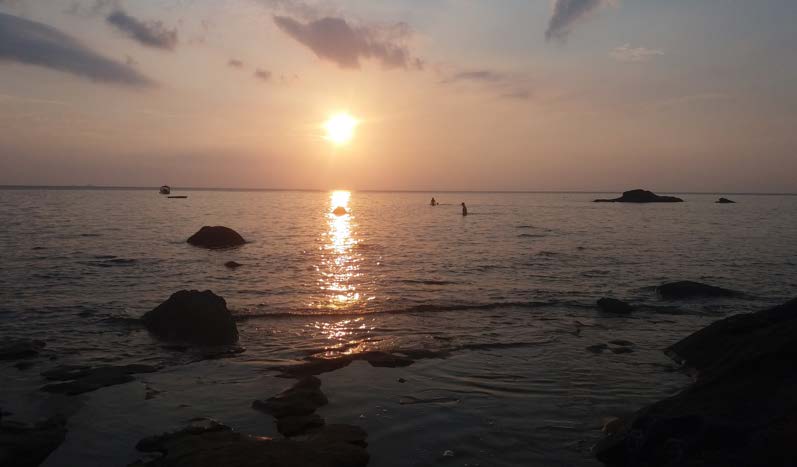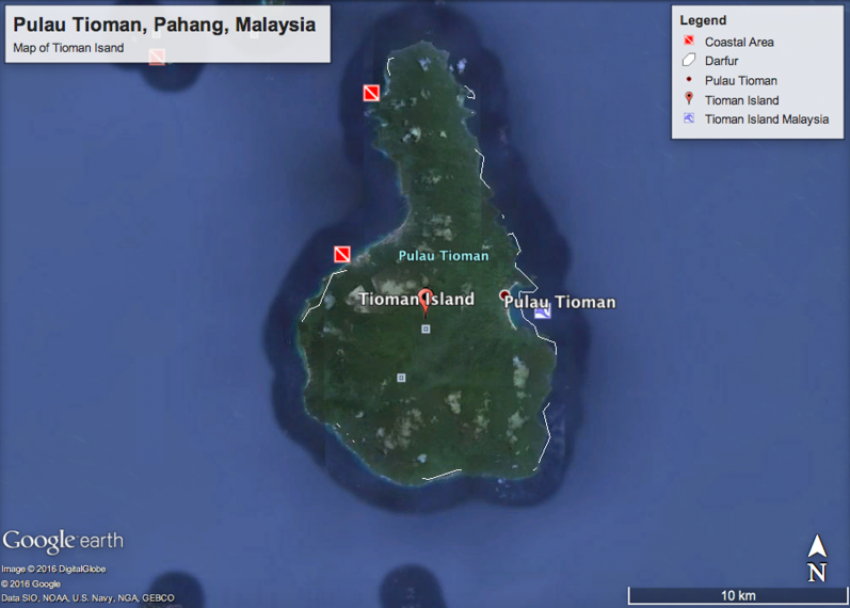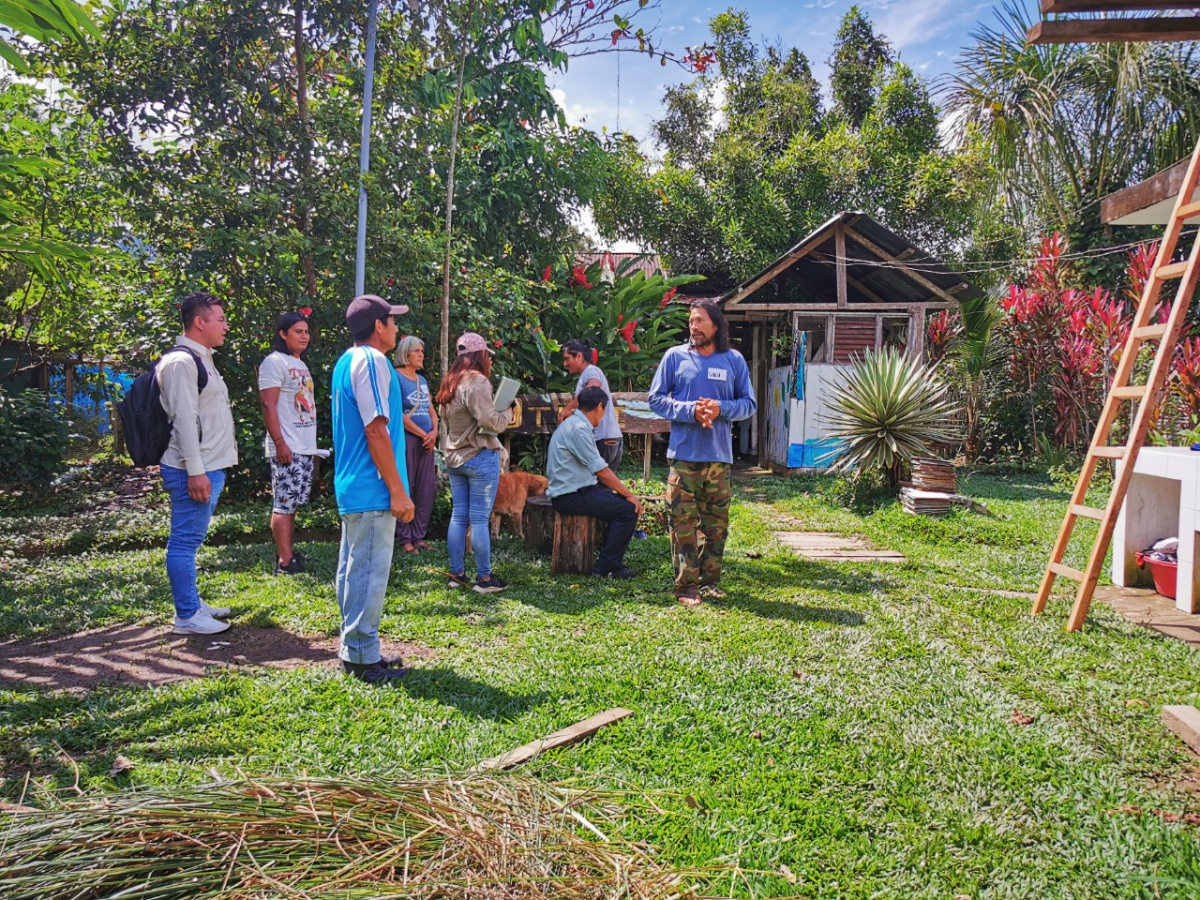Pulau Tioman, a key Malaysian ecosystem
by Gabriel Van Duinen, Young WCPA Member, Geographer
Pulau Tioman is home to tropical rainforests, intertidal zone habitats and coral reefs which house a variety of critically endangered species. Rapid overdevelopment and tourism have put significant stress on Tioman’s fragile ecosystems leading to an urgent need for protection, but progress has been made to protect the island's biodiversity.

Photo: Gabriel Van Duinen 2016
Tioman is located in Malaysia as part of the State of Pahang. It is 32km off the east coast of the state and is accessed by ferry from Mersing, Johor. The island is 20km long and 12km wide with a land area of 136 km2, including 72km2 of primarily inland rainforest which is a protected area.
Pulau Tioman shot to prominence when it was rumoured that its beaches were featured in the 1958 movie South Pacific. While this was never substantiated, the Malaysian Government began to promote tourism to the island. In 1972 the whole of Pulau Tioman was gazetted as a protected area under Malaysian law to protect its natural beauty. However, in 1984, due to political and economic factors, the coastal villages of Tioman were un-gazetted to allow for their use in the rapidly expanding tourism industry. Subsequently the Malaysian government placed the waters around Tioman in the Mersing Marine Park in 1987 to prevent overfishing and destruction of the fragile reef.
Biodiversity and Cultural Values

Pulau Tioman has a substantial amount of terrestrial and marine biodiversity. While the majority of Tioman’s inland rainforest is secondary due to the impact of natural occurrences including monsoons and fire, there is still a wide variety of flora and fauna. In the lower rainforest shrubs and small trees including the Alstonia angustiloba are common. Further various species of Rafflesea unique for its lack of true roots and parasitic nature are endemic to the area and in need of protection due to their rarity. In the the upper rainforest tall trees are prevalent with Shorea and Dipterocarpus being the most common species.
There is also a large amount of fauna in the tropical forest. Several species of bats are native to the area including the Cynopterus brachyotis brachyotis (Dog Faced Fruit Bat). These bats are threatened by the light pollution caused by increased tourism development. Further there is a large diversity of mammals including the Macuco fasciculari laeta (Long faced Macaque) which is native to Tioman and surrounding islands. 32 lizard species and 26 snake species can be found on the island and many of these are unique to it. Insects are also prevalent with 138 different species of birds being recorded on the island and countless insects and butterflies.
In the intertidal zones Holothuroidea (sea cucumbers) are common as well as Padina (funnel weed). A variety of Malacostraca (crabs) can also be seen in the intertidal zone. Unfortunately, due to natural weather occurrences and human interactions the intertidal zone has been significantly damaged. Tioman’s mangroves however are teaming with life and have 23 different species of mangrove plants including the rare Rhizophora X lamarkii hybrid. In addition, these mangroves act as sanctuaries for various small fish in increasingly high tides.
The coral reefs of Tioman have been radio carbon dated to be over 6,000 years old. These corals support large marine life including the vulnerable Tridacna gigas (Giant Clam) and the near threatened Carcharhinus melanopterus (blacktip reef shark) as well as the endangered Chelonia mydas (green turtle) and the critically endangered Eretmochelys imbricate (Hawksbill Turtle). The continued coral stress places this biodiversity at substantial risk.
There is also cultural significance to the biodiversity on Tioman. In the agama asal or pagan beliefs in Malaysia, the spirit of “Mother Willow” a strangling fig is revered by local people. Many other plants in the tropical rainforest areas are used for traditional medicine and religious ceremonies and there is also a reliance on coastal areas for religious practice.

The main concern is rapid overdevelopment stimulated by the Malaysian government’s promotion of the island as a tourist destination and the investment of foreign companies into resorts without considering the long term environmental consequences of their establishments.
Waste management poses a particular problem for the island and while some resorts are responsible others and the local community burn rubbish in large quantities releasing pollution into the natural environment. There is no system for disposing the remnants of burnt waste leaving visual pollution.
Efforts have been made to protect Tioman's environment by the government and the local communities, and there has been progress towards effective management, including tourist awareness campaigns and managed turtle hatcheries by the state and national government.
PHOTOS: Gabriel Van Duinen 2016



